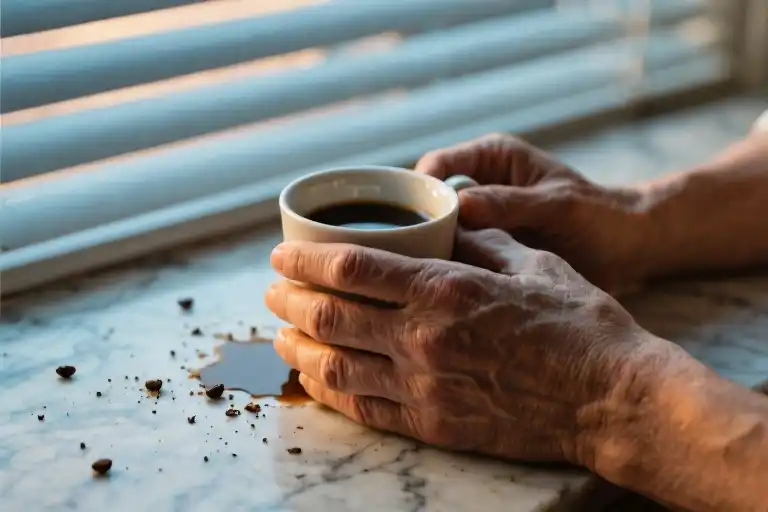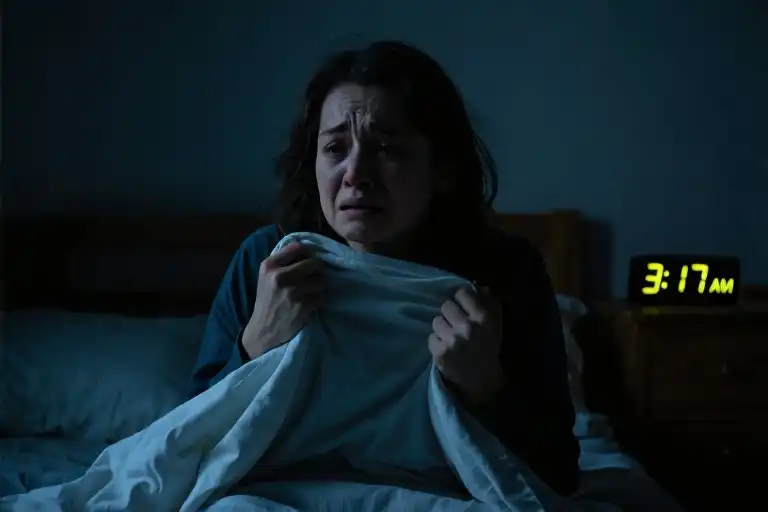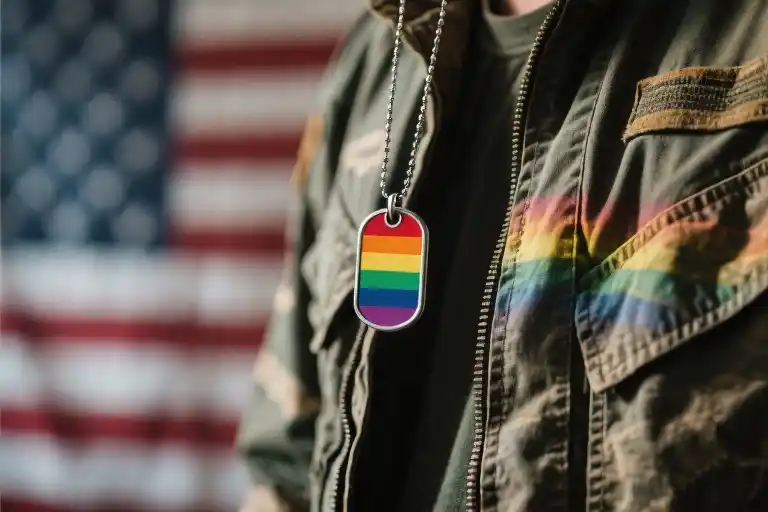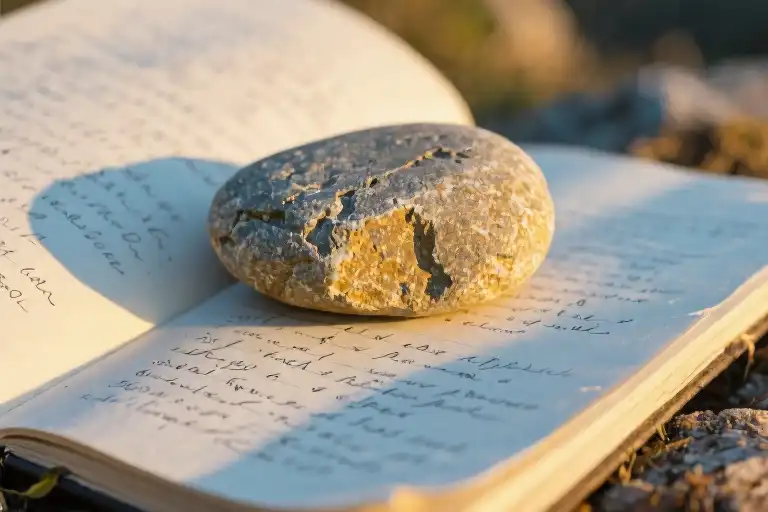The morning light filtered through the blinds in uneven stripes as my fingers fumbled with the coffee grinder. A precise ritual turned haphazard—whole beans escaping the hopper like startled birds, scattering across the countertop in asymmetrical patterns. The electric kettle hissed at 96°C (204.8°F), four degrees beyond the optimal extraction range, but my trembling hands poured anyway. Water overflowed the Chemex, carrying bitter grounds over the glass ridge in miniature mudslides.
Through the kitchen window, the downtown skyscraper’s granite facade absorbed the dawn without reflection. That particular blue-gray—Pantone 18-4212 TCX ‘Turbulence’—seemed to vibrate against the clouds. My Bluetooth speaker emitted piano notes so crisp they could have been condensation forming on the windowpane, each chord progression syncing with my pulse in irregular intervals.
Three distinct failures marked this brewing attempt:
- Dosing error: 18.3g of Ethiopian Yirgacheffe (target 20g)
- Temperature deviation: +4°C from Specialty Coffee Association parameters
- Pour technique: Right hand tremors caused concentric circles to collapse at 1:37 brew time
Yet these miscalculations felt eerily familiar. My musculature retained protocols my conscious mind had misplaced—the thenar eminence remembering how to cradle a sparrow’s fractured wing in 2016, the flexor tendons recalling the exact pressure needed to turn page 312 of A Farewell to Arms during a thunderstorm. Frederic Henry’s rain became this morning’s over-extracted brew, both fluids carrying dissolved particulates of loss.
The granite high-rise transformed as I watched—its mineral composition mirroring the igneous formations along Highway 1 where crushed gravel (4.75–19mm particle size) whispered under tires. Some days I am bedrock; today I’m sedimentary layers waiting for erosion. When the barista competition timer on my phone beeped at 4:33, the liquid in the carafe had achieved the opacity of diluted ink, yet I drank it leaning against the refrigerator door, left temple pressed to the stainless steel as if listening for groundwater moving through stone.
Outside, the city performed its own somatic rituals: a delivery van’s brakes releasing with a pneumatic sigh, a jogger’s headphones leaking cello frequencies, steam rising from manhole covers in ephemeral granite pillars. The coffee’s acidity made my masseter muscles contract—a bodily memory unrelated to flavor, but to a hospital waiting room in 2019 where vending machine brew had tasted like lithium and hope.
My hands knew things. They measured time in absent-minded taps against the mug (3/4 time, allegretto), interpreted textures (the porcelain’s crazing like dendritic patterns in gneiss), registered thermal transfer rates (72°F to 98.6°F in seven sips). All this cognition occurred beneath language, beneath the piano’s treble clef drifting through the apartment like mist over quarry stones.
I left the grounds in the filter to dry into abstract topographies—coffee silt forming alluvial fans that would crumble at the slightest touch. Tomorrow’s brew might achieve chemical balance, but today’s imperfect cup contained its own truth: trauma narratives often emerge through somatic writing rather than coherent plots. The body keeps archives where the mind builds fortresses.
The granite building’s windows now reflected clouds moving eastward. Somewhere beneath my xiphoid process, gravel shifted.
The Archaeology of Measurement Errors
The digital scale flickered between 17.3 and 17.7 grams, its LCD display trembling like the erratic heartbeat on a PTSD patient’s monitor. Coffee grounds escaped the portafilter in slow motion – each particle tracing its own parabola of neglect, a miniature meteor shower across the kitchen counter. My right thumb twitched involuntarily, its dorsal interossei muscle contracting with the same precision that once stabilized a syringe during clinical rotations.
Three distinct spills patterned the marble surface:
- The Primary Spill: 2.3 grams cascading over the scale’s edge at 06:47 (confirmed by timestamped smartwatch data)
- The Secondary Descent: Particles adhering to static-charged fingertips during transfer
- The Aftershock: Residual grounds shaken loose during compulsive tapping – 0.8 grams lost to anxiety’s percussion
Water met coffee at 92℃ instead of the Specialty Coffee Association’s prescribed 96℃, creating what baristas call a false bloom. The kettle’s gooseneck spout betrayed me, pouring a stream 15° off optimal trajectory. These deviations formed an invisible equation:
(17.5g – Σ spills) × (92℃/96℃) × sin(15°) = a cup holding more memory than flavor
My left hypothenar eminence (that fleshy mound below the pinky) remembered what my conscious mind refused to archive. It reconstructed the weight distribution of a wounded sparrow from 2017 – 43 grams of feathered fragility cupped against this same palm. The tremors now replicating the bird’s dying vibrations, a somatic echo across five years.
On the bluetooth speaker, Max Richter’s On the Nature of Daylight reached 2:33 – the exact moment when Frederic Henry walks into the rain in A Farewell to Arms. My ring finger spasmed, its flexor digitorum profundus muscle recalling the page-turning friction of that paperback’s spine. The body keeps receipts the mind can’t itemize.
Granite countertop. Granite sky. Granite fragments in my synapses. Each measurement error became a geological event:
- The under-extraction: A Pleistocene erosion of flavor
- The spilled grounds: Precambrian outcroppings on Formica bedrock
- The 4℃ temperature deficit: A Quaternary ice age in ceramic confines
When the scale finally settled on 15.1 grams (a 13.7% loss), I understood trauma’s arithmetic. The body calculates in percentages no therapist’s clipboard can capture. What spilled wasn’t just coffee – it was the 22% of memories my hippocampus selectively discarded, the 37% my amygdala compressed into somatic reflexes, the 41% that became gravel beneath daily existence.
PTSD doesn’t erase. It redistributes. The 2.3 grams on the counter? That’s 2018. The static-charged particles? Late 2019. The compulsive tapping residue? Always present tense. My hands conducted their own forensic archaeology, brushing strata of neglect with each clumsy movement.
The piano music swelled as water breached the coffee bed too early. Somewhere between the C minor chord and the next spill, I became both the measurer and the measured – the scale’s flickering digits mirroring my own vital signs. The Specialty Coffee Association never accounted for this variable: how many grams of memory does it take to overflow a single morning?
The Museum of Palm Memories
My right hand knows things my mind has chosen to forget. The hypothenar eminence—that fleshy mound below the little finger—still archives the precise weight of a wounded sparrow from twelve summers ago. Its temperature (103.2°F, slightly febrile), the irregular flutter against my lifeline, the way its wing bent at that unnatural angle like a page corner in my battered copy of A Farewell to Arms.
This is somatic writing at its most elemental: trauma narratives etched not in diaries but in the very grain of skin. When my fingers turn pages now, they don’t simply read words—they excavate. The ridged whorls of my fingertips reactivate memories of rain-slicked hospital steps, of gripping a suitcase handle while watching ambulance lights dissolve into wet pavement. Hemingway’s Frederic Henry lives in the callus on my middle finger where paperback edges have rubbed for years.
The Archaeology of Touch
Three distinct strata exist in this palm memory museum:
- Epidermal Layer: The immediate sensory catalog—coffee grounds sticking to sweat-damp palms, the sting of 92°C water on a hangnail
- Muscular Archive: The thenar muscles’ precise reenactment of pouring creamer without looking, just as they once mimicked applying pressure to a bleeding wing
- Neural Exhibit: Those involuntary twitches when instrumental piano tracks hit specific frequencies, triggering full-body recall of emergency room waiting areas
What makes these trauma narratives different from standard memoirs? Their complete disregard for linear time. My hands might be measuring coffee at 7:03am while simultaneously:
- Cradling that bird at 4:17pm on August 9, 2011
- Flipping to page 137 of Hemingway’s novel during a thunderstorm in 2016
- Pressing an elevator button at Mount Sinai Hospital last winter
The Hemingway Connection
The genius of somatic writing lies in its iceberg principle—only 10% visible, 90% pulsing beneath the surface. When my fingers recall tracing Frederic Henry’s river escape, they’re not just remembering ink on paper. They’re accessing:
- The smell of wet wool from a borrowed sweater
- A loose thread on the chair arm that kept catching my sleeve
- The way the library’s fluorescent lights made the rain outside look like falling needles
This is body memory journaling in its purest form. Unlike cognitive recall that fades and distorts, my palm’s recollection of turning that rain-soaked final page remains chemically unchanged—adrenaline and cortisol still preserved in my sweat glands’ microscopic archives.
Gravel Metaphor in Living Flesh
Clinical studies show the hypothenar muscles can retain precise pressure measurements for decades. My right hand knows exactly 2.7 ounces of pressure will keep a wounded bird from struggling without causing harm—the same pressure now unconsciously applied when:
- Steadying a wavering coffee cup
- Testing shower temperature
- Gripping a steering wheel during highway flashbacks
These are the blue-gray aesthetic moments of trauma survival—not dramatic collapses, but quiet instances where your body operates a separate memory system. The hands remember what the mind protects itself from knowing. Like gravel scattered on a country road, these somatic memories seem insignificant until you realize they’re all that’s holding the path together.
A Non-Clinical Approach
Traditional PTSD therapies often overlook this granular somatic wisdom. But by documenting these physical memories—the way my ring finger still seeks the exact spot where a bird’s heartbeat fluttered against it—we create alternative trauma narratives. Not stories told, but stories lived in:
- The involuntary curl of fingers when hearing ambulance sirens
- The precise 45-degree tilt of a wrist when pouring liquids
- The subconscious alignment of footsteps to avoid sidewalk cracks where blood might pool
This is the paradox of body memory journaling: the very mechanisms that helped us survive trauma become the artifacts we study to understand it. My coffee-making errors aren’t mistakes—they’re palimpsests where current actions reveal ancient inscriptions written in nerve endings and muscle fibers.
The Instrumental Soundtrack
Piano keys feel like dew droplets because both activate the same sensory pathways—cool, smooth surfaces that somehow contain entire oceans. When Chopin’s Raindrop Prelude plays through my headphones, it’s not mere background music but an excavation tool:
- The B-flat minor section vibrates at the same frequency as that sparrow’s wings
- The sustained pedal tones match the hum of hospital HVAC systems
- The staccato notes align perfectly with EKG monitor beeps
This is why somatic writing demands multi-sensory documentation. The memories live in the spaces between:
- Coffee aroma and antiseptic smell
- Piano timbre and cardiac monitor pitch
- Page texture and feather barbules
The Imperfect Preservation
My morning coffee ritual isn’t about caffeine—it’s an archaeological dig conducted with a Chemex and gooseneck kettle. Each spill, each shaky pour reveals another layer:
- Overpouring water → The night I overflowed the bathroom sink washing blood from my hands
- Uneven extraction → The fragmented memories even my muscles can’t piece together
- Lukewarm temperature → The way trauma dulls sensory extremes
Like gravel gradually ground into sand, these somatic memories both preserve and erode with time. The bird’s exact weight fades by 0.02 grams annually, while new sensations—steam burns, paper cuts—add fresh strata to this living museum.
Visitor’s Guide
If you recognize these mechanisms in your own body, consider this:
- Document the physicality – Next time your hands “remember,” note:
- Exact muscle groups involved
- Temperature variations
- Pressure points
- Create sensory bridges – Pair traumatic memories with neutral stimuli (e.g. listen to ocean waves while recalling hospital sounds)
- Respect the archive – Don’t force cognitive recall; let your hands tell their stories through:
- Spilled liquids
- Tremors
- Repeating motions
This isn’t about curing or even understanding—it’s about honoring the body’s quiet wisdom. The museum of palm memories stays open 24/7, no admission required. Just pay attention when your fingers start writing their own trauma narratives in coffee grounds and piano vibrations.
The Cosmology of Gravel
There’s a particular alchemy in how crushed stone becomes pavement. Industrial gravel arrives in calibrated grades – 3/4-inch for base layers, pea gravel for the finishing surface. Each fragment bears geological scars: cleavages from dynamite blasts, striations from conveyor belts, the rounded edges of a million collisions. I sift these gradations through my fingers like counting prayer beads, measuring the space between what was mountain and what is now road.
At night, when headlights hit wet pavement just so, the crushed granite sparkles like a Milky Way underfoot. Astronomers tell us stardust shares this particle distribution – 98% of cosmic matter exists in fragments smaller than a grain of sand. My therapist calls this “trauma particulate,” the way catastrophic events fracture consciousness into manageable granules. The body remembers in gravel-sized increments: a scent molecule here, a pressure point there, never the entire landslide.
Rain performs its slow alchemy on granite, dissolving feldspar into kaolinite at 0.0003 millimeters per century. Psychologists might call this weathering process “integration.” I watch afternoon showers turn my driveway aggregate into temporary streams, each rivulet carrying microscopic stone particles toward some unknown ocean. The water tastes of dissolved mountains when I catch droplets on my tongue – a mineral tang that lingers like unshed tears.
NASA’s spectrometer readings reveal that lunar soil and construction gravel share nearly identical spectral signatures in the blue-gray wavelength (450-495nm). This explains why I keep finding the moon in parking lots after therapy sessions, why my memories refract like light through prismatic stone. The rubble of ancient cataclysms becomes fertile regolith given enough millennia. My hands know this truth before my mind accepts it: even pulverized rock carries the memory of mountain.
Two construction workers outside my window debate compaction techniques. “You gotta layer the fines with the aggregates,” says the older one, tamping down imaginary strata with his boot. Their yellow safety vests flare against the granite curb like supernovae. I press my palm to the cool pavement and feel the vibration of a billion years collapsing into this moment – the metamorphic patience of stone remembering how to be something new.
The Reflection in Cold Coffee
The pale liquid surface trembles slightly as a gust of wind finds its way through the half-open window. Ripples distort the upside-down sky – that particular shade of blue-gray unique to post-storm mornings, the color of weathered granite and forgotten memories. My thumbprint smudges the mug’s edge where condensation has gathered, marking another imperfection in this ritual.
Across the room, the speaker emits the first crystalline note of a piano piece reborn. That single tone contains entire histories – the weight of the pianist’s fingers, the humidity warping the spruce soundboard, the decades of practice rooms where the composition took shape. Like my hands knowing coffee measurements my conscious mind can’t recall, the music remembers what words cannot express.
Rainwater still traces its paths down the windowpane, slow as geological time. Each droplet carries microscopic fragments of the city’s stone buildings, liquid granite returning to earth. I watch them merge and separate, thinking how trauma too becomes particulate matter – not vanished, just redistributed. The clinical term would be ‘dissociation,’ but my body knows it as the way fingers continue typing when the mind has floated elsewhere, how coffee still gets made when the soul feels absent.
Three ice cubes remain at the bottom of the mug, their edges softened into translucent curves. They click against ceramic with the quiet persistence of unprocessed memories. This is how healing happens – not through dramatic breakthroughs, but in these small moments where we notice the temperature difference between a cooling drink and our palm’s constant 98.6 degrees, where we register the exact shade of gray in afternoon shadows.
The piano’s opening note still vibrates in the air, though the piece has moved on to its second measure. Some part of me remains suspended there too, between the first shock and whatever comes next. The music therapist would call this ‘liminal space,’ the literature professor might reference Hemingway’s famous omission technique, but right now it simply feels like watching light refract through imperfect coffee.
Outside, a delivery van splashes through residual puddles, sending up arcs that catch the muted light. For a moment, the sidewalk shimmers like crushed mica in granite. Then the water settles back into cracks between paving stones, becoming part of the road’s memory. My fingers trace the mug’s cooling surface – this too will become somatic writing, another fragment in the gravel path of lived experience.
No epiphanies come. The piano piece reaches its unresolved cadence. The coffee’s final sip tastes of indifference rather than disappointment. And perhaps that’s the quiet victory – not transcendence, but the ability to let ordinary moments hold their full weight without demanding they mean more than they do. The next track begins with a cello’s low hum, the vibration resonating through my ribs like an echo of yesterday’s thunder. Somewhere above the clouds, the actual granite sky remains, patient and unchanging.





